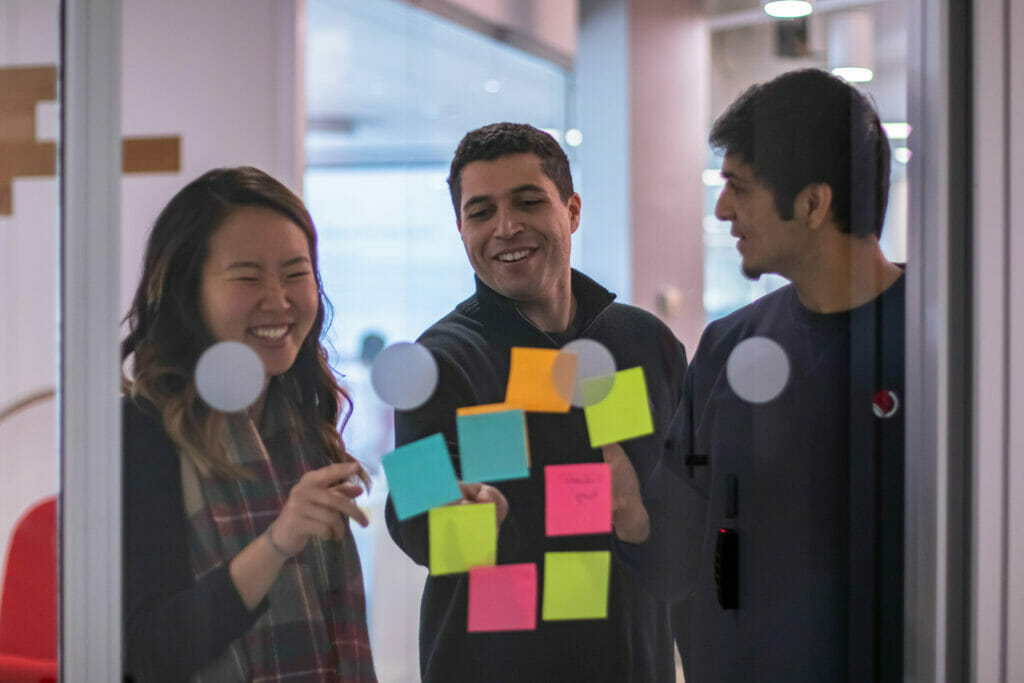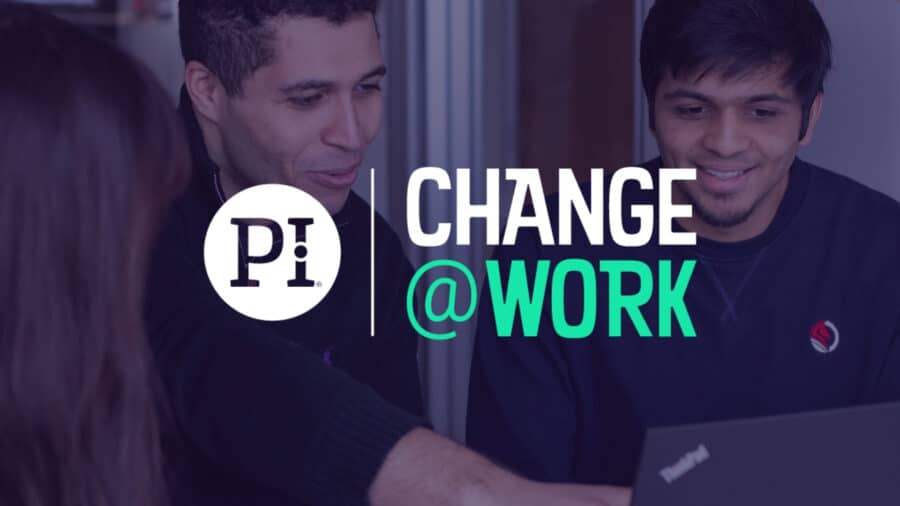Workplace diversity is a representation of talent that varies in characteristics such as age, gender, ethnicity, cultural background, beliefs and identity, and physical and psychological abilities.
In inclusive and equitable work environments, having diverse talent allows for a greater range of perspectives and expertise. Within a team setting, that diversity often translates to enhanced problem-solving and decision-making.
This article will explore the state of diversity in the workplace, and focus on:
- Benefits of workplace diversity
- Types of workplace diversity
- The importance of workplace diversity in 2023, and
- Improving workplace diversity through recruiting, hiring, and management techniques
Benefits of workplace diversity
In current diversity conversations, organizations often look for the “business case,” such as increased revenue or productivity. But this thinking often ignores the crucial human “why” behind diversity: the long-term health and success of your people.
Let’s compare the business case and the human case perspectives:
The business case
The popular business case stresses the benefits of a diverse workforce to the bottom line. In a 2020 report, McKinsey presented a strong case for both gender and ethnic diversity in the C-Suite. It also indicated that advantages of diverse companies continue to strengthen with time.
Drawing from a diverse talent pool helps organizations bring in a variety of unique perspectives. Diverse workplaces and inclusive leadership allow businesses to leverage different backgrounds to tackle a wide range of problems. In a BCG study, researchers even found diverse teams generate greater revenue and EBIT margins than their peers.
Yet, it’s important not to oversimplify the connection between diversity and business outcomes. The benefits of diversity can only bear fruit in inclusive environments. These are environments where employees can bring their whole self to work. They’re environments where team members can enjoy an atmosphere of psychological safety.
The business case for workplace diversity doesn’t appeal to all. And while this case has been long demonstrated and discussed, it hasn’t spurred widespread change. In 2015, fewer large companies were run by women than by men named John. Success in diversifying since then has been modest.
Along with the business case, organizations also often refer to the legal case for diversity—or compliance. While important, the legal case is even less intrinsically motivating than the business case.

The human case
In a recent article, I suggested that both compliance and the business case are not sufficiently motivating because they don’t connect with human emotion or elicit intrinsic motivation.
Humans are driven by emotion. As illustrated by the Civil Rights Movement resulting in the Civil Rights Act, or the Capitol Crawl leading to the Americans with Disability Act, progress toward equal opportunities often requires a focus on social justice. And that starts by righting wrongs, respecting human rights and dignity, and acknowledging the universal need to belong.
Emotion is powerful fuel for action. But that fuel can burn out, leaving us tired and turning to extrinsic tools of compliance and regulation.
The most sustainable “why” for diversity, then, should appeal to both schools of thought. It should promote the whole individual—the mind and the heart—as well as the bottom line. A comprehensive case for diversity provides powerful, lasting motivation. It fuels the work by making inclusion an integral part of organization design.
I define this type of WHY as inclusive thriving. Thriving applies both to people of all backgrounds, ages, and abilities, and to organizations. Diversity is more than meeting compliance standards, supporting the bottom line, or adding to the “human balance sheet.” It’s creating inclusive systems that support human thriving in tandem with productivity.
Inclusion benefits all stakeholders—individual employees, organizations, and societies. Diversity and inclusion are an integral part of systems designed for thriving, rather than a collection of add-on programs.

Types of workplace diversity
As organizations look to build inclusive teams, they tend to do so through the lens of demographic diversity. From a compliance viewpoint, companies also follow specific legally defined demographics.
In the U.S. and many other countries, legal protections apply to a wide range of minority groups. But in practice, diversity goals and research tend to focus on gender and ethnic diversity (often used interchangeably with race in the U.S.).
Increasingly, sexual orientation representation has gained traction alongside ethnic and gender makeup. For example, McKinsey reports tend to focus on gender and race diversity. Meanwhile, Glassdoor’s D&I workplace survey also includes sexual orientation. Similarly, California’s requirements for Board diversity aim to increase gender, race, and sexual orientation diversity.
But these documents tend to exclude other types of diversity, such as disability or socioeconomic background. Hence, extrinsically motivated organizations have little incentive to consider “forgotten” diversity categories. And very few do.
Before returning to the big picture of diversity in the workplace, let’s explore these often forgotten factors in greater detail:
Disability
Disability is the largest minority group. Yet only 4% of organizations include disability in their diversity programs. Many job seekers with disabilities face significant barriers in the hiring process. At the same time, those who are employed face unaccommodating work environments and potential biases. A study by the Center for Talent Innovation indicated 30% of white-collar employees have a disability, yet only 3.2% disclose it to their employers.
Neurodiversity
Similarly underserved is neurodiversity. This can be illustrated by the paradox of an 80%-85% unemployment rate among autistic professionals with college degrees. These professionals, when appropriately matched to jobs, can be up to 140% more productive than the typical employee. They also have remarkable retention rates, according to research by Specialisterne.
Individuals with learning differences such as dyslexia or dysgraphia also face obstacles. In the U.K., 52% of job seekers with dyslexia said they experienced discrimination in the recruitment process.
Elon Musk’s revelation of being on the autism spectrum (under the older label of Asperger’s) may give some job seekers hope for more opportunities. But it remains to be seen whether the bias against people on the spectrum will lessen. It’s possible the denial of ability stereotypes will simply be replaced by the denial of difficulty biases.
Socioeconomic class
Another forgotten yet important dimension of diversity is socioeconomic class. Statistically, the impact of class on work outcomes is comparable to gender and race. Yet in 2020, none of the companies on DiversityInc’s “Top 50 Companies for Diversity” mentioned social class in their diversity goals or programs. This leaves the most underserved members of society behind.
Age
Despite the work of organizations such as AARP, age discrimination in the workplace is pervasive. Yet it’s rarely addressed or even noticed. Ageist language in job descriptions, such as a “digital native,” is similarly unchecked.
Religion
Religion, or faith, is another forgotten dimension of diversity. Many feel that discussing religion is “uncomfortable” or “polarizing,” and are thus tempted to ignore it.
Immigration
While the importance of diversity suggests immigrants bring unique value to organizations, they face much adversity. Just a few years ago, Katalin Karikó, a Hungarian immigrant in the U.S. who dedicated her life to research that culminated in the Pfizer and Moderna COVID vaccines, was demoted and threatened with deportation.
Intersectionality
Intersectionality refers to the relationship between the various dimensions of a person’s identity (e.g., class, national origin, disability, and gender diversity). These dimensions often overlap to create additional forms of diversity—and potential adversity.
As supported by Kimberle Crenshaw’s research on Black women, addressing only one or two dimensions of diversity leaves many individuals excluded. For example:
- When disability programs only support transitions from high school into entry-level jobs, older and more educated individuals with disabilities get left behind.
- When companies recruit via ethnic diversity clubs in Ivy League schools, students from less elite institutions, regardless of their talent, get excluded.
The need to address disability, socioeconomic diversity, and complex intersectionalities doesn’t mean gender, ethnicity, or any dimension of diversity have “arrived.” In fact, recent diversity challenges call for increased attention to ensure equal opportunities for women and people of color.
Join 10,000 companies solving the most complex people problems with PI.
Hire the right people, inspire their best work, design dream teams, and sustain engagement for the long haul.
The importance of workplace diversity in 2023
The COVID-19 pandemic demonstrated the fragility of prior decades’ diversity gains.
Many women, especially mothers, were forced to exit the workforce. Employers expected much unpaid work and 24/7 availability from employees without children. Asian Americans faced xenophobic bias and violence. African Americans experienced both racism and the disproportionate COVID death toll.
COVID also disproportionately affected Native and Hispanic Americans. Native Americans’ economic struggles were exacerbated by their “invisibility.” Ageism and ableism intensified. And while racial justice protests prompted an explosion of diversity-focused job openings in the second part of 2020, this came after the slashing of DEI offices and programs earlier in the year.
The post-pandemic rebuilding of 2021 brought a tremendous shortage of talent. However, the “shortage” reflects the fact that much of the potential talent pool is never developed. Others get excluded by job descriptions focused on “forceful go-getters,” a.k.a. young males. Those who manage to receive a job offer often face rigid or fear-driven work environments, elitist company cultures, and other biases that interfere with retention.
The “talent problem” is in fact a diversity, equity, inclusion and belonging problem. Fair hiring practices, inclusive cultures, and the elimination of bias will help expand the talent pool. And this will benefit marginalized individuals, minority groups, and organizational bottom lines alike.

Improving workplace diversity through recruiting, hiring, and management techniques
Ensuring equity for candidates of all diversity categories and intersectionalities may seem daunting. But many tools can help organizations improve workplace diversity and inclusion. A systemic approach focused on fairness across various intersectionalities, rather than multiple separate programs (one for women, one for veterans, etc.), is likely to be most effective.
Inclusive workplaces ensure equity across the entire employment cycle. Equal opportunities start prior to the recruitment and hiring process. Job design must focus on related skills, abilities, and tasks. Avoid combining disparate requirements, which is particularly detrimental to neurominority applicants and those with disabilities.
Recruiters, HR professionals, and hiring managers should carefully evaluate job descriptions. Listed requirements must be truly essential. The language of these descriptions shouldn’t discourage women, people with disabilities, older individuals, or other underrepresented job-seekers from applying. Recruiters should also intentionally reach out to underrepresented communities.
Selection validity requires careful planning of the right pre-employment tools. Sampling actual performance is even better. Interviews, especially if unstructured, can be fraught with the affinity bias and disadvantage applicants from lower socioeconomic backgrounds, from cultures that teach modesty norms, and neurominorities. Unconscious bias training for interviewers can help, but it might be best to avoid unstructured interviews altogether.
Justice and fairness remain important even after hiring. Development opportunities, performance evaluations, compensation, and promotion are also vulnerable to biases. Diversity training can be helpful. Developing leader empathy and cultural humility for inclusive leadership is essential.
Ultimately, relying solely on the “good will” of managers is unlikely to be as effective as transparent and accountable systems for inclusion. Accountability can be ensured through diversity and inclusion metrics such as hiring rates, compensation, promotions, job satisfaction, retention, employee engagement, and employee perception of inclusion and belonging within the culture.
The state of diversity in the workplace calls for a concerted effort from boards, C-Suite leadership, diversity officers, HR professionals, and employees. Those with the most power should take responsibility for the outcomes. And all can develop greater understanding, empathy, and flexibility, which support productivity and well-being.
Post-pandemic rebuilding has given us an opportunity to build back better. Let’s build inclusively.
Ludmila Praslova, Ph.D., helps organizations develop inclusive cultures and processes. She is a Professor and Director of Research with Graduate Programs in Organizational Psychology at Vanguard University of Southern California, a SHRM blog contributor, and the editor of the upcoming book Evidence-Based Organizational Practices for Diversity, Inclusion, Belonging and Equity. Follow her on LinkedIn.


